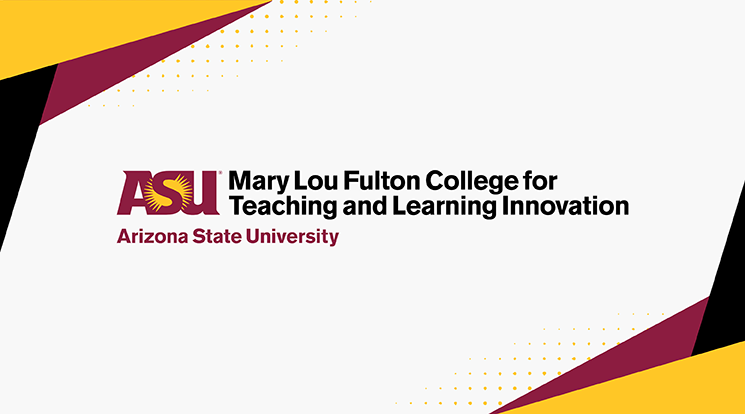Science fiction: double feature

Approximately 18 months ago, a couple of generous donors approached ASU’s Center for Science and the Imagination (CSI), with an interest in creating a comic book for young people around sustainability and systems thinking. That idea became the science-based comic book, “Drawn Futures: Arizona 2045,” for fifth through eighth-grade students.
Bob Beard, communication and public engagement strategist in the Center for Science and the Imagination, has been leading the project, along with Ruth Wylie, CSI assistant director and assistant research professor at Mary Lou Fulton Teachers College. “We wanted to infuse the idea that sustainability is not just a technological fix — it requires human consideration and deliberation,” Beard says. The two also note that in an increasingly networked and visual culture, comic books and graphic novels are important tools for boosting literacy, communicating with diverse audiences and creating a safe space to discuss complex scientific and social topics.
The main character of the book, Gabe Arroyo, is a 16-year-old student living in Arizona in the year 2045. The world is populated by autonomous drones, large and small networked devices, “smart” clothing and solar collectors on nearly every surface. It’s a technological adaptation to a future marked by persistent temperature increases. By all accounts, these technologies have solved the question of sustainability in the desert. But when Gabe and his mother investigate a series of mysterious fires at a solar generating plant, they realize there are deep ecological impacts behind even the most elegant solutions and that climate change is a messy, human problem that requires constant mindfulness, evaluation and deliberation.
To ensure accuracy, CSI worked with Paul Hirt, ASU senior sustainability scholar. “He helped us figure out the sticky points of things that we should be considering in the story,” Beard says. The team also brought in rising third-year sustainability scholar Andrew Dana Hudson who wrote a supplementary essay for the team, while the studio Visionary Comic edited the product.
As far as working with a curriculum consultant? “Loosely,” Wylie says. “There hasn’t been a strong curriculum push. If anyone in the college wanted to take that on, we would be thrilled to see that happen. But it hasn’t happened yet.” That said, Wylie says the team was very cognizant to look for an opportunity both for informal and formal environments in which the project could be utilized. “We didn’t want to restrict it.”
The team’s first thought was to put the book in libraries and then look for a way to get it in front of students. “As we’ve been sharing it with people, we’ve had classroom teachers approach and ask if there are copies available and ways to use it.” As Wylie said, integration within formal curriculum was not an original goal, but rather something she and her team are excited to see people express interest in.
“Drawn Futures: Arizona 2045” is available as a free download. And, through the original donation sponsorship, the team was able to create 10 classroom sets of 25 to 30 color books. An application is available on the website for teachers and school administrators to request one.
It’s alive
In the midst of the bicentennial of Mary Shelley’s “Frankenstein,” Beard and Wylie’s team, alongside the award-winning transmedia studio No Mimes Media and support from the National Science Foundation, brought “Frankenstein200” to life.
“Frankenstein200” is a digital narrative paired with hands-on activities at over 51 science museums and science centers across the U.S. “We are using Mary Shelley’s ‘Frankenstein’ as a way to engage young people and address science ethics and science responsibility and society issues,” Wylie says, “We want to create a culture where people feel comfortable and willing to talk about science and its impact on our daily lives.” Both Beard and Wylie understand this is a daunting task. “Talking about science ethics and responsibility seems to turn people off.” Which is where this project comes in.
The experience invites audiences to participate in science activities and thought experiments sponsored by the high-tech Laboratory for Innovation and Fantastical Exploration (L.I.F.E.) founded by Dr. Victoria “Tori” Frankenstein. Tori is a fifth-generation Frankenstein relative who needs assistance in her lab to complete small tasks. Players quickly learn that Tori is grappling with some heavy ethical and responsibility issues and the players must help her make decisions, ultimately determining the outcome of the story.
Although “Frankenstein200” was designed for informal learning, educators and administrators have been reaching out to the team saying they have found it to be a useful teaching tool. Currently, the team is working with Laguna Middle School in San Luis Obispo, California and Greenway Middle School in Phoenix, Arizona.
Aside from the 200th anniversary of the book, why Frankenstein? Wylie explains, “It is this ubiquitous story about science and science ethics and responsibility that is very relatable. Even if you haven’t read the novel, people are familiar with the story.” It’s an engaging topic, Wylie continues, and by introducing really serious issues of ethics and responsibility through the lens of “Frankenstein,” a much more diverse audience is interested than would be otherwise.
“Frankenstein” is also considered to be the first science fiction novel. Wylie says, “The term scientist wasn’t invented when Mary Shelley wrote the novel and Victor was never referred to as a scientist. He’s referred to as a scholar and philosopher.” It was years later that the term scientist was coined, but by that time “Frankenstein” had already really influenced society’s idea of what a scientist is.
“Frankenstein200” features performances by actors Rose Abdoo (“Gilmore Girls”), Nikki SooHoo (“The Lovely Bones”) and Jeremy Howard (“Teenage Mutant Ninja Turtles”). It was produced with advisement from the Arizona Science Center, the Bakken Museum in Minneapolis, the Children’s Museum of Pittsburgh, the Illinois Institute of Technology, the J. Craig Venter Institute, the Keats-Shelley Association of America, the New York Public Library, the Science Museum of Minnesota, the Rosenbach Free Library of Philadelphia, and the Museum of Science, Boston.
Enter the world of Frankenstein200.